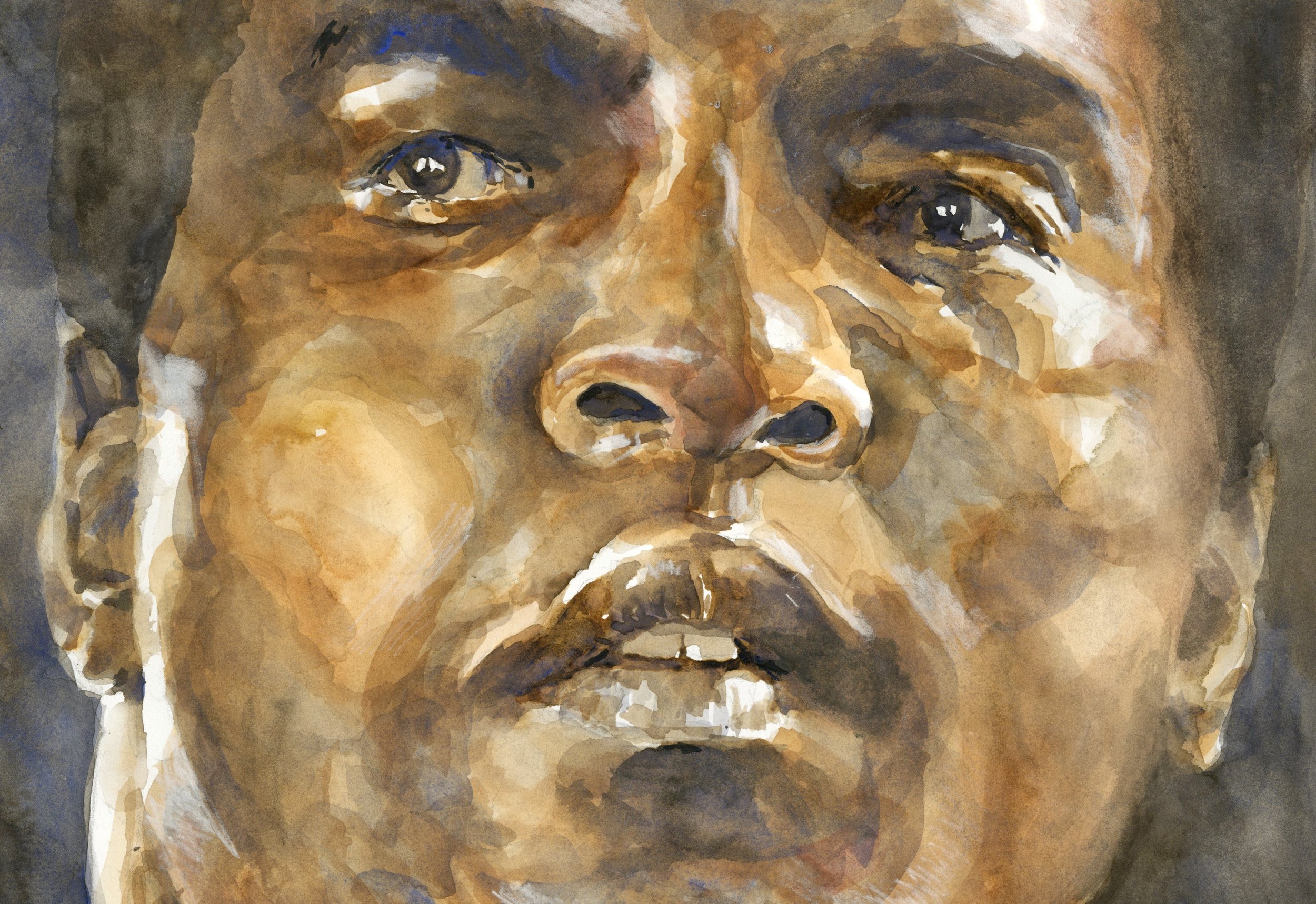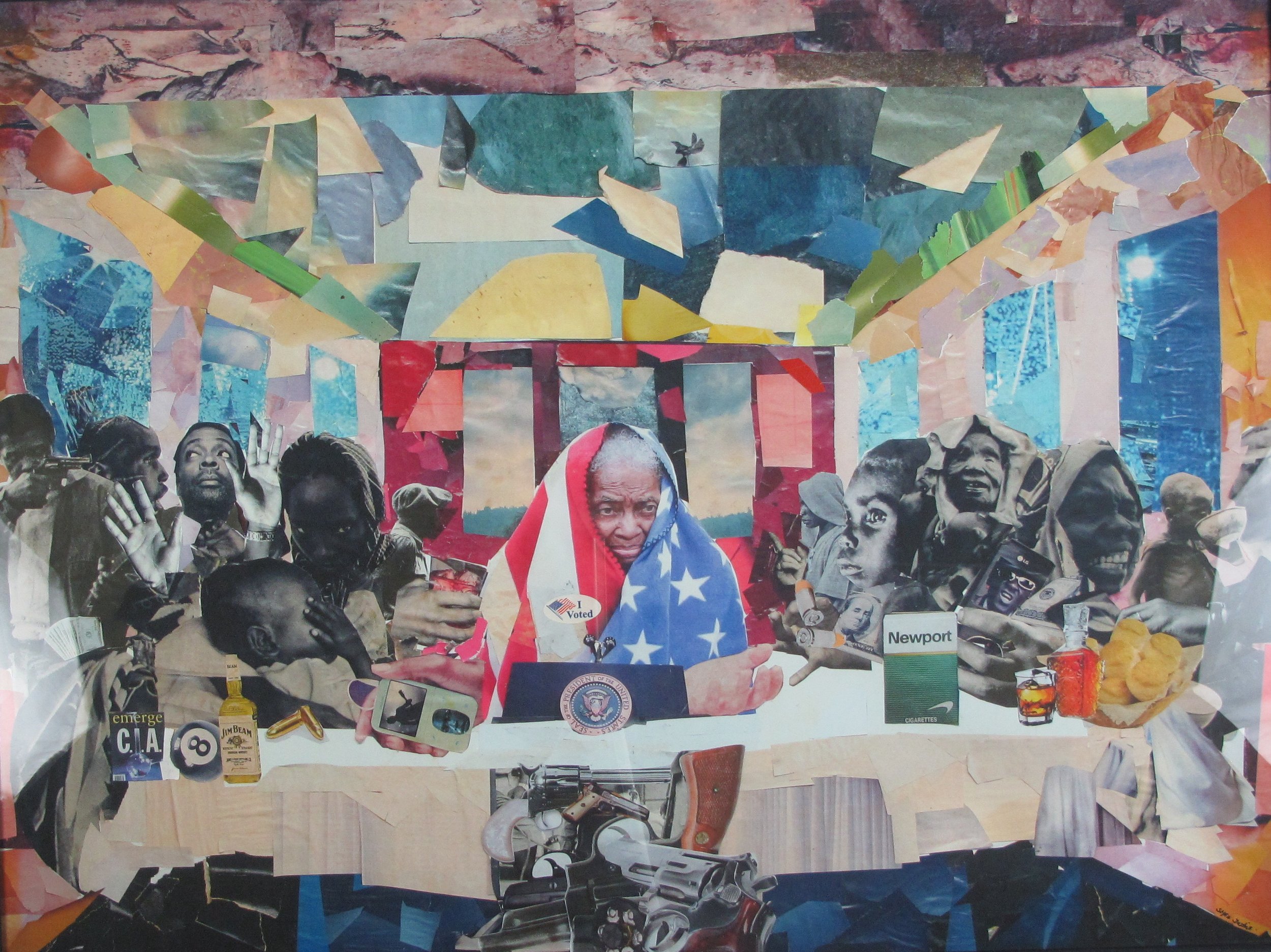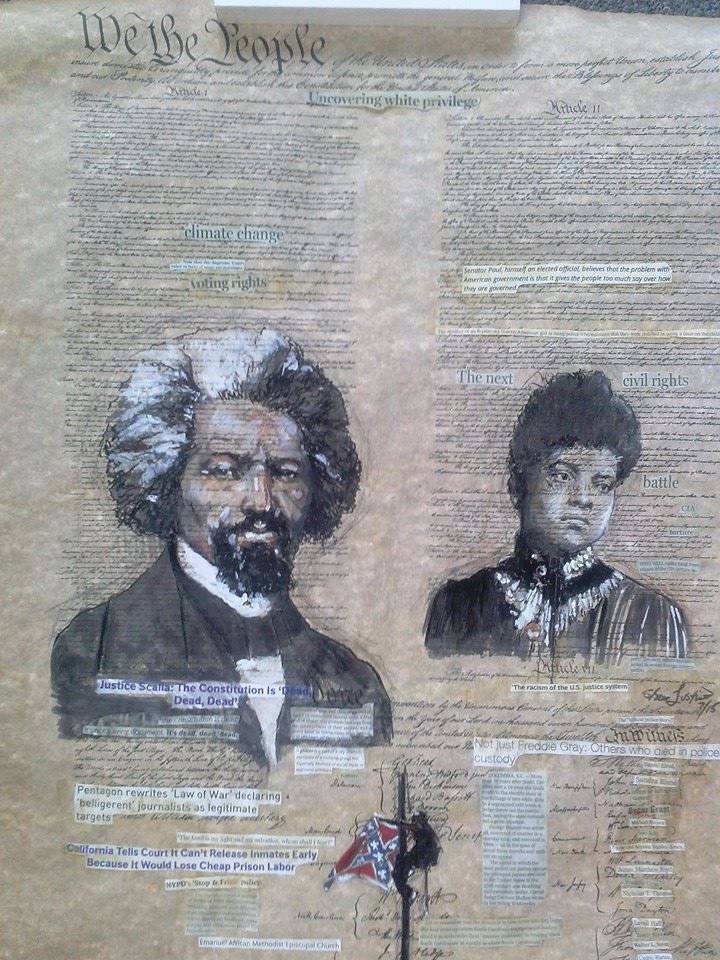History is No Mystery
Shea Justice
June 1-26, 2022
SoWa First Friday Art Walk: Friday, June 3 | 5–8PM
Juneteenth Artist Talk: Sunday, June 19 | 2–4PM
In “History Is No Mystery” Shea Justice explores facets of United States laws and customs and their impact on African Americans from their inception to this day. Justice’s work often features portraits of figures that have either made significant contributions to events in American history or have been impacted by those events. Using watercolor and collage, he applies images and text to replicas of historical documents like the US Constitution. In these, he explores the motives and meaning behind the words that have shaped policies in America—and presents the past as prologue to current events. In another long-term and ongoing body of work, Justice illustrates and documents events in American history, such as the War on Terror, on multiple rolls of rice paper, some hundreds of feet long. The format of the scroll allows the drawings and written commentary to accumulate across time, with events added as they occur, from beginning to conclusion. Justice's work is united by his intention to acknowledge the African Diaspora and to address legal and political realities of being Black in America over the centuries. Both archive and timeline, each piece in Justice’s extensive body of work is part of a single overarching narrative about the American experience as told by a Black man. Through his devoted labor and meticulous research, Shea Justice is a witness of his time.
PRESS RELEASE (PDF)➢
PRICE LIST (PDF) ➢
BOSTON GLOBE REVIEW BY CATE MCQUAID ➢
MEDIUM REVIEW BY ROB SULLIVAN ➢

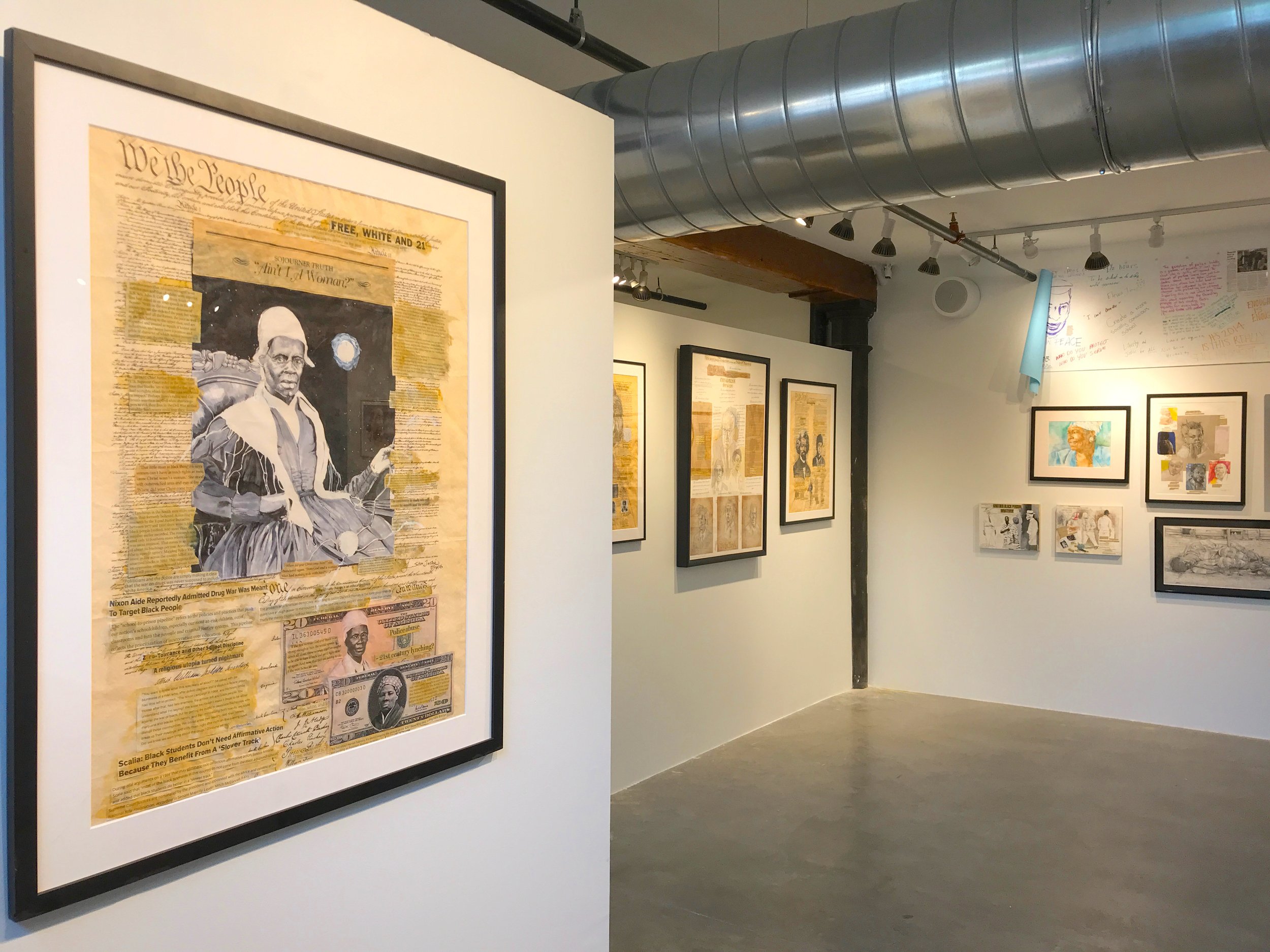
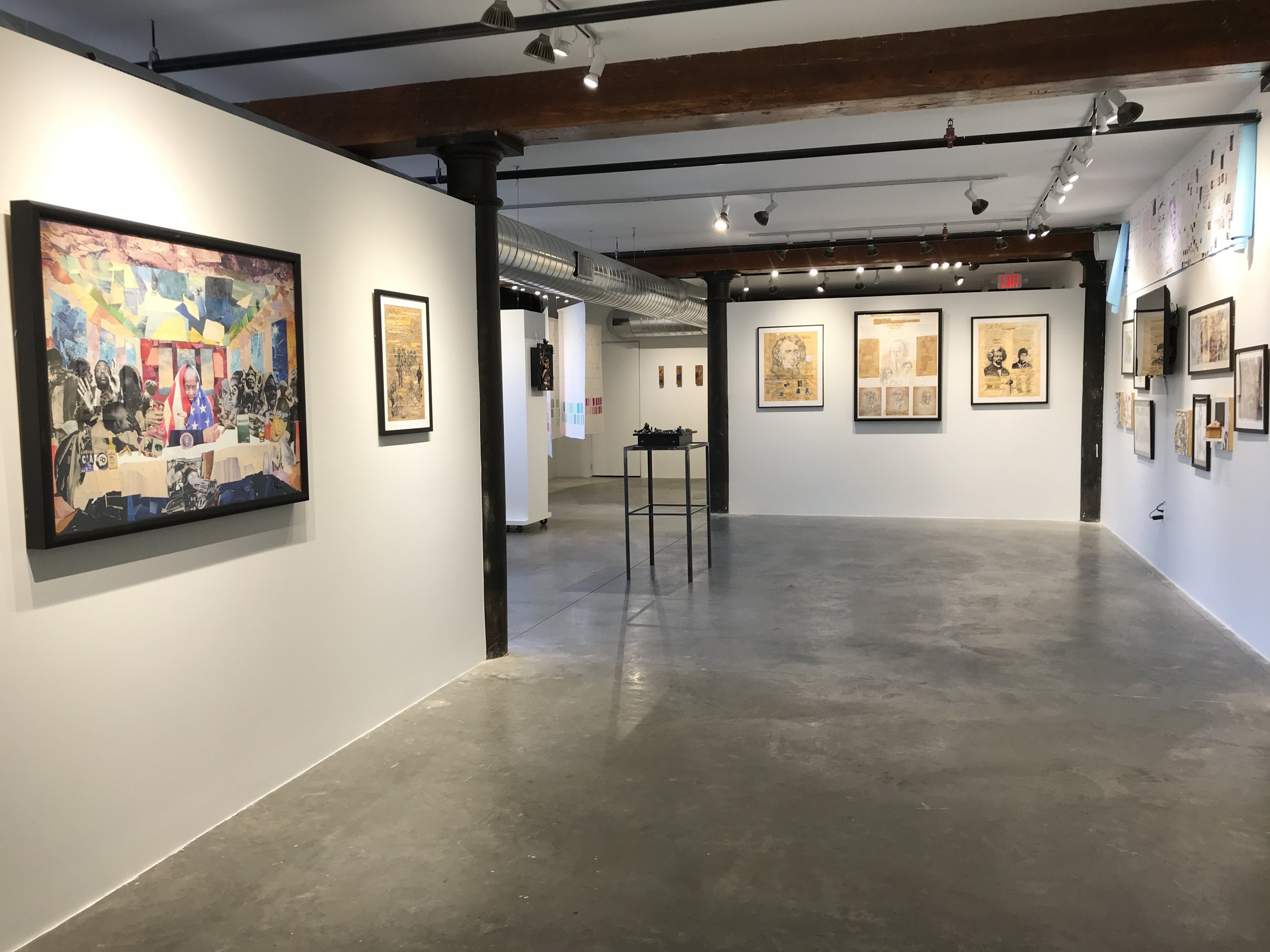
Shea Justice
Image: Ali The Greatest
Artist statement:
My work is very political in content. I try to create art as a form of documenting experiences and realities involving people and mainstream pop culture during times of war and strife in the digital age. I prefer to use a variety of paints/markers and other media combined with text and headlines from a variety of news sources and articles. Hopefully much of the work will be combined/displayed to form a narrative about the African American experience throughout the country’s history.One of the most consistent projects I have been working on since 2003 has been a series of scrolls that I document and record moments in history. I use different media and new sources to write down and illustrate events and political figures involved on the paper. I always include the dates and images that can be found in the associated press and other news sources.By using rice scrolls I create longstanding timelines about how a government’s war from its inception until its conclusion affects the ideology and lives of the citizens it affects through propaganda and . The text on the scrolls includes information, commentary and dates that are from around the time the events occur. during the war occur. Many of the images on the scrolls are of people who make policy decisions, those who are affected by them, and how it impacts me on a day to day basis.The series of scrolls I’ve done are based on the traditional Asian techniques used to relate stories. By using Chinese ink , watercolor paint and pencil drawings on many parts I try to archive a visual sense of change depending on the time and situations that occur. The political context of my work has been influenced by diverse people from artists like Sue Coe and DanaChandler to political writers like James Baldwin and Noam Chomsky.During the pandemic of 2020 I’ve spent much of my time ( in addition to working on the scrolls )taking a number of headlines and articles in the newspapers and adding them to sketches and drawings I’ve rendered to make collages and archive the headlines that are currently happening. I will also render images of figures from the past that are still relevant to events currently happening. My preference in creating work is to archive people and events during different periods of time in American history. In doing this , I hope to have a narrative/timeline with all of my work that would engage the viewer as a creative and educational tool in learning about different art media and history
Bio:
Shea Justice grew up in Roxbury, Massachusetts. As a child he developed a passion for art from watching Drawing From Nature with Captain Bob Cottle and reading comic books. After attendingBoston University where he got a BFA in art education he taught in Fort Lauderdale Florida and later in the Boston Public school system. He later got an MFA in art from the Art Institute ofBoston at Lesley University. Currently he is a teacher at LincolnSudbury Regional High school.As an artist Shea prefers to work on editorial illustrations and political imagery. He gains inspiration from the works of SueCoe, Dana Chandler and Thomas Nast. A number of his pieces are also full of pop culture references because of his appreciation for Andy Warhol and the Pop Art movement. In addition to research and studying American history Shea also gains ideas from attending ComicCon annually and from traveling to various foreign countries with his sketchbook in tow.Recently Shea's work has taken a gradual shift in media and materials he uses. He chooses to use replicas of historical documents like the Constitution and cut and paste text and images onto it as well as drawings and paintings on the surface. He chooses to take what has been historical documents and cover them with text from current events and exposing what should be constitutional to how such a document has yet to be realized even in modern times as it relates to people of color.Shea has participated in art exhibitions throughout the Boston area. He has work permanently on display at the Sudbury PublicLibrary and the Grove Hall Library. He was once an Artist/ LivingRoom Host at the Gardner Museum and gave an artist talk at the DeCordova museum. For the last twenty years he has been a member of Northeastern University's AAMARP group ( Afro American MasterArtist Residency Program

